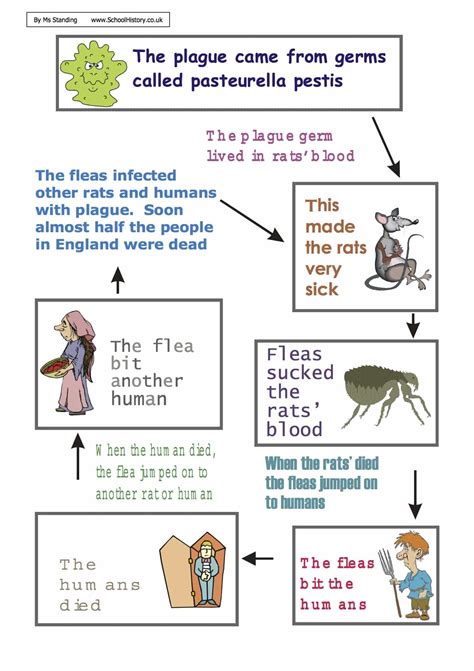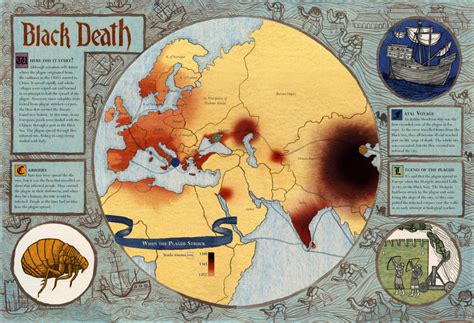The plague, a term that evokes images of medieval Europe and widespread devastation, is a disease with a long and complex history. Caused by the bacterium Yersinia pestis, the plague has been responsible for some of the most significant pandemics in human history, including the Black Death, which is estimated to have killed between 75 million and 200 million people in the 14th century. Despite its historical significance, the plague remains a misunderstood disease, with many people unaware of its causes, symptoms, and ongoing impact on public health.
Historical Context of the Plague

The plague has been present in human societies for thousands of years, with evidence of its existence dating back to ancient civilizations in Egypt, Greece, and Rome. However, it was the Black Death, which occurred in the 14th century, that had the most profound impact on European society. The pandemic, which is believed to have started in Central Asia, spread rapidly throughout Europe, killing an estimated 30-60% of the population. The social, economic, and cultural consequences of the Black Death were far-reaching, leading to significant changes in the way people lived, worked, and interacted with one another.
Causes and Symptoms of the Plague
The plague is caused by the bacterium Yersinia pestis, which is typically transmitted through the bites of infected fleas or direct contact with infected animals. There are three main forms of the plague: bubonic, pneumonic, and septicemic. Bubonic plague, the most common form, is characterized by the presence of swollen lymph nodes, or “buboes,” in the groin, armpits, or neck. Pneumonic plague, which is more deadly, occurs when the bacteria infect the lungs, while septicemic plague, the rarest form, occurs when the bacteria enter the bloodstream directly. Symptoms of the plague can include fever, chills, weakness, and swollen lymph nodes, and if left untreated, the disease can be fatal.
| Form of Plague | Symptoms | Mortality Rate |
|---|---|---|
| Bubonic Plague | Swollen lymph nodes, fever, chills | 1-5% if treated, 50-60% if untreated |
| Pneumonic Plague | Cough, difficulty breathing, chest pain | 100% if untreated, 5-10% if treated |
| Septicemic Plague | Fever, chills, abdominal pain, bleeding into the skin | 100% if untreated, 5-10% if treated |

Key Points
- The plague is caused by the bacterium Yersinia pestis, which is typically transmitted through the bites of infected fleas or direct contact with infected animals.
- There are three main forms of the plague: bubonic, pneumonic, and septicemic, each with distinct symptoms and mortality rates.
- The plague has had a significant impact on human history, including the Black Death, which killed an estimated 75 million to 200 million people in the 14th century.
- While modern antibiotics have reduced the mortality rate of the disease, the plague still poses a threat to human health, particularly in areas with poor sanitation and limited access to medical care.
- Prevention and control measures, such as eliminating fleas and rodents, improving sanitation, and using antibiotics, are essential for reducing the risk of plague transmission.
Public Health Response to the Plague

The public health response to the plague involves a combination of prevention, detection, and treatment strategies. Prevention measures, such as eliminating fleas and rodents, improving sanitation, and using insecticides, can reduce the risk of plague transmission. Detection involves identifying cases of the plague through laboratory testing and contact tracing, while treatment involves the use of antibiotics to cure the disease. In addition to these measures, public health officials also work to educate the public about the risks of the plague and the importance of taking preventive measures.
Challenges in Controlling the Plague
Despite advances in medical care and public health, controlling the plague remains a significant challenge. In many parts of the world, particularly in rural and underserved areas, access to medical care is limited, making it difficult to detect and treat cases of the plague. Additionally, the plague can be difficult to diagnose, as its symptoms are similar to those of other diseases. Furthermore, the use of antibiotics has led to the development of antibiotic-resistant strains of Yersinia pestis, making treatment more complicated.
What is the most common form of the plague?
+The most common form of the plague is bubonic plague, which is characterized by the presence of swollen lymph nodes, or "buboes," in the groin, armpits, or neck.
How is the plague transmitted?
+The plague is typically transmitted through the bites of infected fleas or direct contact with infected animals.
What is the mortality rate of the plague if left untreated?
+The mortality rate of the plague if left untreated is approximately 50-60% for bubonic plague, 100% for pneumonic plague, and 100% for septicemic plague.
In conclusion, the plague is a complex and multifaceted disease that has had a significant impact on human history. While modern antibiotics have reduced the mortality rate of the disease, the plague still poses a threat to human health, particularly in areas with poor sanitation and limited access to medical care. By understanding the causes, symptoms, and public health response to the plague, we can work to prevent and control its transmission, ultimately reducing the risk of this devastating disease.

